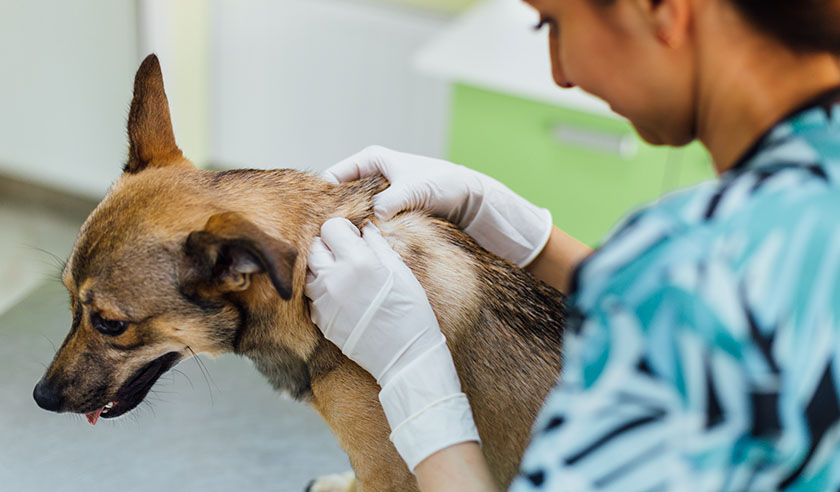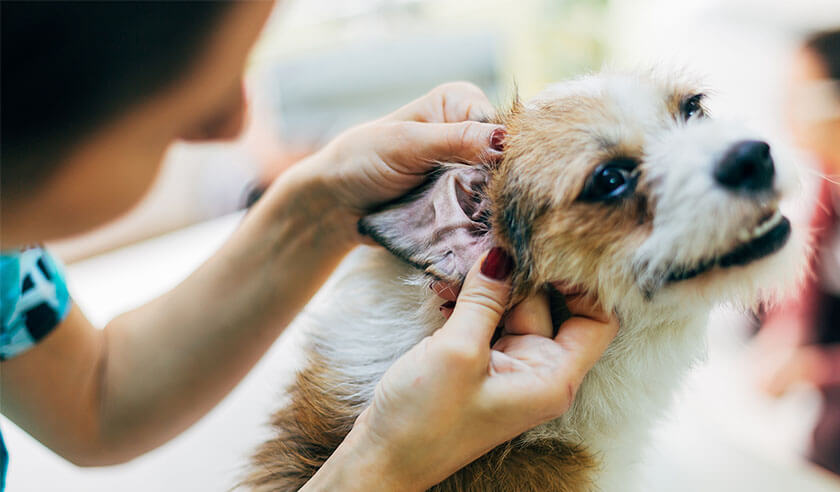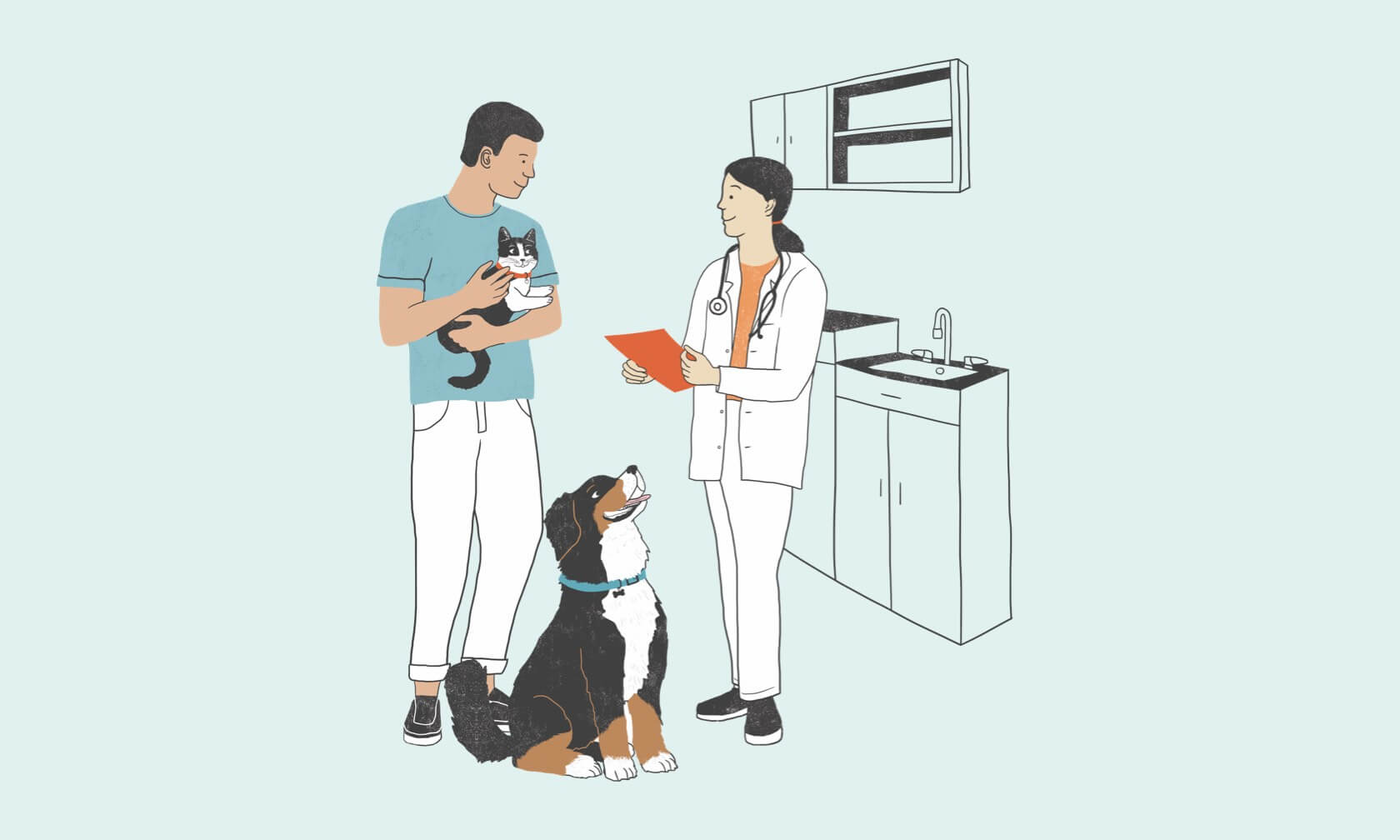Dogs and humans naturally have a group of bacteria called Staphylococcus living on their skin. Your dog and these bacteria live in harmony without any issues as long as the skin is healthy. If there is a change in the skin barrier, the bacteria quickly multiply and overwhelm the immune system, leading to a bacterial skin infection (also known as a Staph infection). So how can you keep your dog’s skin healthy and what can you do if a bacterial skin infection occurs?
What Is a Staph Infection?
Many species of bacteria make up the group known as Staphylococcus. Some live harmlessly in mucous membranes around the mouth, nose, eyes, and genitalia. Others are normal residents on the skin of healthy dogs.
When your dog’s skin barrier and immune system are compromised, bacteria will multiply and result in higher levels of these organisms on the skin. This makes the skin more prone to the development of a Staph infection — also known as either Staph dermatitis or Staph pyoderma.
How Do Dogs Get Staph Infections?
Many different things can lead to Staph infections in dogs, but some causes are more common than others.
Scratching
The skin barrier becomes compromised when dogs lick, chew, and scratch at it more than usual. Repetitive itching can be caused by several things, such as fleas, environmental allergies (atopy), food allergies, or contact allergies. These types of skin issues, referred to as skin allergies or allergic skin disease, are the most common cause of recurring Staph infections in dogs.
Changes to the Skin
Medical issues can also cause changes in the skin. Seborrhea (or excessive scaling and flaking of the skin) or hormonal imbalances like hypothyroidism can create the ideal environment for Staph bacterial skin infections.
Medical Conditions
Medical conditions or medications that weaken a dog’s immune system can also make them susceptible to infections of the skin, ears, respiratory tract, or urinary tract. While any dog can develop an infection, puppies and senior dogs are more likely to have issues since they tend to have weaker immune systems.
Signs & Symptoms of Staph Infection in Dogs
Signs of a Staph infection will depend on the location (like the skin, respiratory tract, urinary tract) and severity. Dogs with Staph infections within the respiratory tract may cough or have breathing issues. Frequent urination, straining to urinate, or blood in the urine are possible signs of a Staph infection within a dog’s urinary tract.
Dogs with Staph infections involving the skin and ears may show the following signs:
- Itchiness
- Hair loss
- Inflammation – causing the skin to look red, seem painful, and warm to the touch
- Pustules or papules
- Peeling
- Crusts
If you suspect your dog has any type of Staph infection, it is important to have them evaluated by their veterinarian immediately. Untreated Staph infections in dogs can develop into more severe infections, sepsis (blood poisoning), and even death.
Dog Staph Infection Treatment
An essential part of treating a Staph infection is determining if there is an underlying cause. If your dog has Staph bacterial skin infections due to skin allergies, your veterinarian needs to figure out what your dog is allergic to so they can develop the most effective treatment plan.
The most effective treatment plan will be based on whether your dog’s underlying allergy is caused by something that can be prevented (like fleas) or something that is chronic and must be managed over time (like food allergy or environmental allergies). Cytology, which requires the veterinarian to collect cells from the affected skin, will be viewed under a microscope to confirm whether a bacterial skin infection is present in your dog. Culture and sensitivity may be recommended by your veterinarian depending on your dog’s history (including duration of disease) and clinical signs.
There are several tests to help determine the cause of skin allergies in dogs. Your veterinarian may recommend your dog start a strict food elimination trial to determine if they have a food intolerance or allergy.
Routine year-round flea control is critical if your dog is sensitive to fleas. Managing fleas within your home and yard is also an important part of the process. Your veterinarian may also recommend testing for environmental allergens and a referral to a veterinary dermatologist if your dog’s skin allergies are occurring more frequently and/or the clinical signs are becoming more severe.
Veterinary dermatologists are board-certified specialists that have completed additional training and have expertise in treating disease affecting the skin, ears, and hair of dogs. They will work with your regular veterinarian and you to better manage your dog’s skin disease and help get your dog some relief.
Medication
Staph infections are caused by bacteria which means antibiotics are the treatment of choice. Depending on the severity and location of the skin infection, topical or oral antibiotics may be prescribed. Antibiotics must be used according to a veterinarian’s directions to ensure your dog’s skin infection is completely resolved the first time and help with the proper use of antibiotics (antimicrobials) in our pets. Generally, antibiotic treatment is continued at least one week beyond the resolution of all lesions to decrease the risk of reoccurrence. The treatment duration for each skin infection may vary (some resolve in 2 weeks while others can take 4+ weeks to resolve), which is why keeping recheck appointments with the veterinarian is important. They will tailor treatment to your dog’s needs and may recommend additional testing.
Your veterinarian also may prescribe anti-inflammatory medications, antipruritic medications, and pain medications to relieve the inflammation, itching and pain associated with a Staph infection.
Hygiene
In addition to antibiotic therapy, your veterinarian may recommend medicated shampoos, sprays, or wipes to help treat the bacterial skin infection and relieve symptoms of the infection. Depending on your dog’s history, a veterinarian many recommend you continue using these therapies after your dog’s bacterial skin infection is gone to help prevent future flare-ups, especially for dogs with skin allergies.
Even if your dog seems better before you’ve finished all the prescribed medications and other elements of their treatment plan, follow the treatment plan as directed by your veterinarian. This helps ensure your dog’s Staph infection is resolved as soon as possible and prevents the misuse of important treatments like antibiotics.
Monitoring
Proper monitoring and control of medical issues are needed to help keep your dog healthy and support their immune system. Regular physical examinations, routine blood tests, and another diagnostic tests are often required to properly manage their condition and prevent future Staph infections.
In addition to controlling any underlying causes, your veterinarian will need to treat the Staph infection and any associated signs.
ZPC-02582





